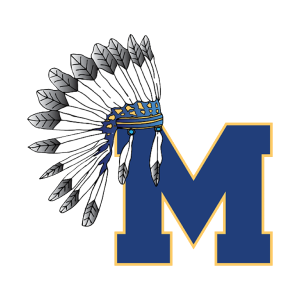Valuable information from Section VIII’s Official Partner in Health Education
ACL Injuries – May 2025
The anterior cruciate ligament (ACL) is a piece of tissue that connects the femur (thigh bone) to the tibia (shin bone). This ligament is extremely important in helping to maintain stability to the knee, particularly during activities which require cutting and pivoting.
When someone tears their ACL, they will usually hear or feel a “pop”. Thereafter, many will begin to see swelling within their knee. After tearing an ACL, it may be difficult to bear weight initially, which usually results in the individual utilizing crutches to walk.
If someone has concern that they may have injured their ACL, they should halt from all strenuous activity, and be evaluated by their orthopedist promptly. An ACL tear can be diagnosed by a good physical exam, where your doctor will examine your knee and evaluate for the integrity of the ACL. An MRI is almost always then obtained to confirm the injury and evaluate for any other concomitant injuries that may have occurred, such as a meniscus or cartilage injury.
If an ACL tear is confirmed, a treatment plan is then developed for the patient. Depending on the patient’s age, activity desires, and goals, options can range from non-surgical to surgical.
Non-surgical measures include rehabilitation to regain full motion of the knee, along with strength of the core, hip girdle, and thigh musculature to provide adequate stability to the knee. This method of treatment is usually reserved for lower demand individuals, such as someone who simply enjoys walking and other low demand activities. Also, the individual should not have any other concomitant knee injuries that could necessitate surgical intervention (a severe enough meniscus or cartilage tear, or concomitant ligament injury).
Surgical measures constitute either repair of the native ACL, or reconstruction of the ACL using a tendon. Reconstruction with a tendon can be performed utilizing a tendon from either the person’s own knee, or from a donor knee. There are positives and negatives to both. Many factors play a role in deciding which procedure to perform and which graft to use, such as the patient’s age and type of ACL tear. Surgery is followed by a lengthy post-surgical rehabilitation course. Surgical measures are recommended for the higher demand individual who engages in activities with significant cutting and pivoting. This includes most competitive and recreational sports.
Unfortunately, ACL tears are becoming far too common. Most importantly, prevention is key. There have been many ACL prevention programs developed with the goal to help individuals condition their bodies to limit the chance of injury. One of the most important aspects in preventing ACL injuries is rest. Playing any sport with fatigue can increase chance of injuring your ACL. We are seeing a much higher increase in rates of ACL injury in our area, as sports which were seasonal before, are now becoming year-round. Thus, get rest, stay hydrated, and keep your supporting musculature strong.
To learn more or to make an appointment, visit https://nyulangone.org/care-services/sports-health.
































































